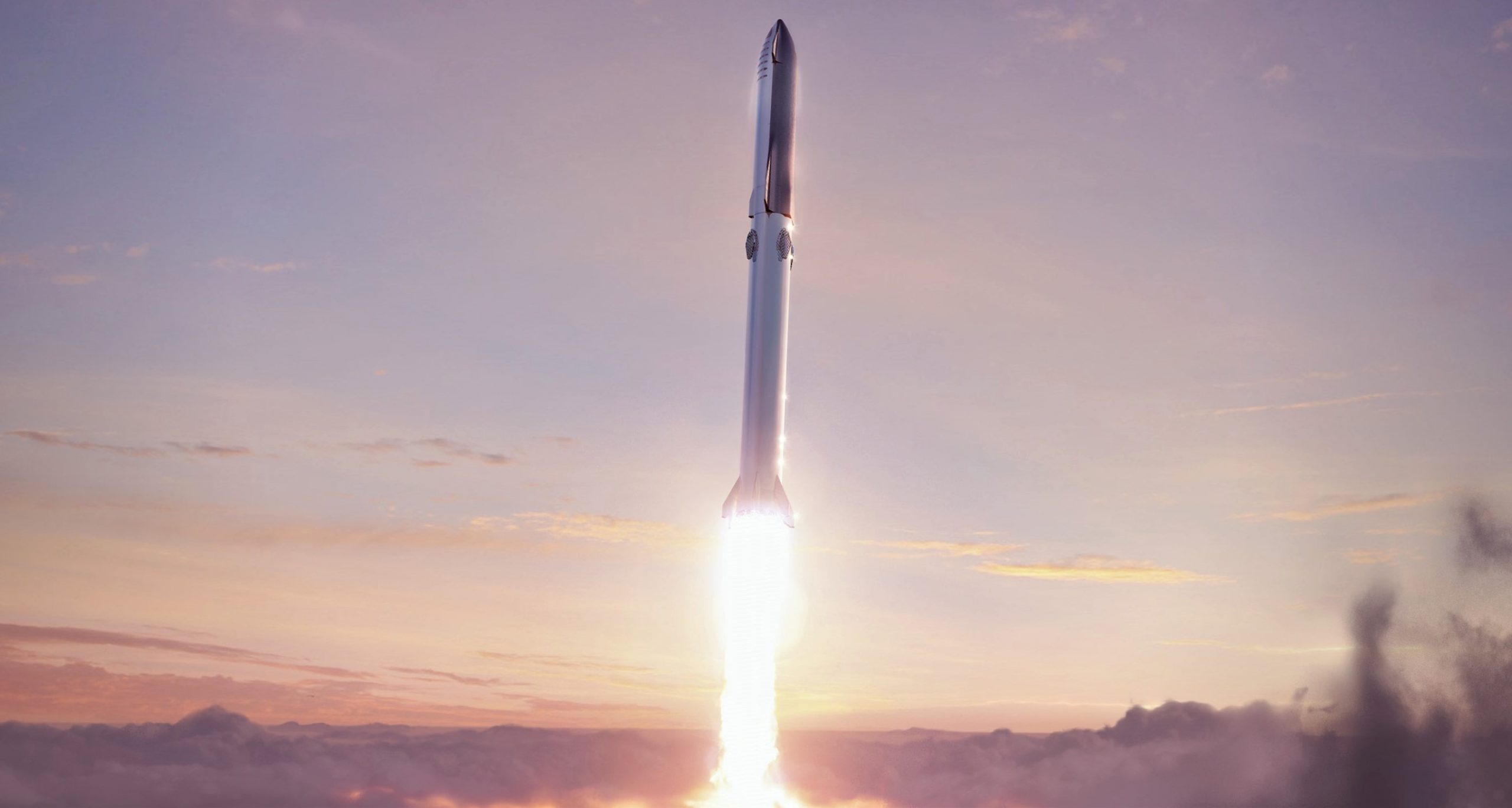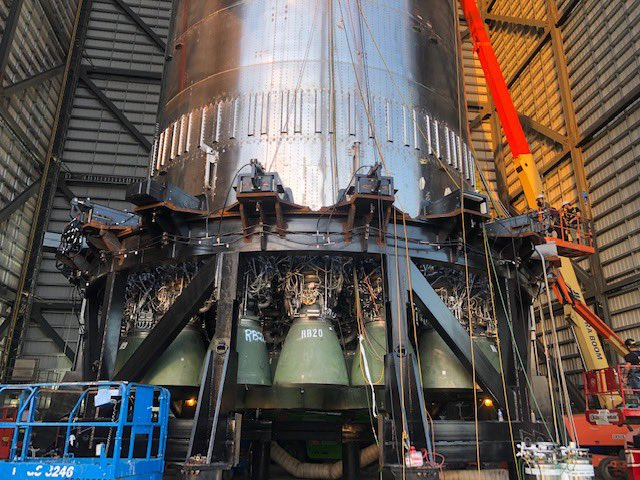US aerospace company SpaceX has assembled the largest rocket ever constructed.
The firm briefly brought together an upper-stage Starship vehicle with a Super Heavy booster at its test facility in Boca Chica, Texas.
Together the two components measure nearly 120m (400ft) in height, taller than the Saturn V rockets used in the Apollo moon missions, which stood about 110.6m.
With its launch stand the assembly rises about 145m, taller than the Great Pyramid of Giza.

Test flight
The vehicle’s engines are expected to deliver about twice the thrust of Saturn V – 70 meganewtons compared to 35 meganewtons.
The Super Heavy includes 29 Raptor rocket engines, with the Starship component having a further six.
SpaceX’s partially reusable Falcon Heavy is currently the most powerful rocket in operation, producing 23 meganewtons of thrust at launch.
A 1,000-tonne crane was used to join the two segments together to test their fittings.
The two components were held together for about an hour before being separated again.
The Super Heavy booster used in Friday’s test is codenamed BN4, which linked to Starship number SN20.
SpaceX is hoping to send the rocket on its first test flight before the end of this year.

Reusability
Under the planned test, the Super Heavy booster is to carry Starship into space, where it is to complete a single orbit of the Earth before being ditched in the Pacific near Hawaii. The Super Heavy booster is planned to fall into the Gulf of Mexico.
The company ultimately wants both segments to make controlled touchdowns on land or sea platforms for later reuse, similar to smaller rockets such as the Falcon 9 booster rocket that SpaceX already has in active use.
The Starship system is intended to be able to take humans to the Moon and Mars.
NASA has already contracted SpaceX to develop a version of Starship to land astronauts on the Moon sometime this decade.
In recent months SpaceX has built a number of Starship prototypes at the Texas facility, called Starbase, some of which have completed high-altitude test launches.
In one such launch in May, the vehicle managed to land vertically, and did not explode, as had some previous prototypes.

Final procedures
The company is awaiting a licence from the Federal Aviation Administration (FAA) to carry out the launch, but the FAA must first carry out an environmental review that includes a 30-day public consultation.
SpaceX chief executive Elon Musk described the latest test on Twitter as a “dream come true”.
He said the next step for Starship would be to add its last heat shield tiles, a process that’s about 98 percent complete.
Thermal protection also needs to be added to the booster engines and ground propellant storage tanks, he said.





